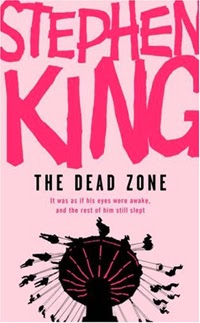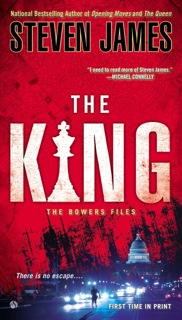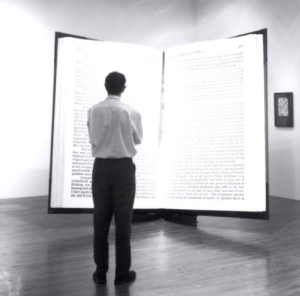Yearly Archives: 2014
Reader Friday: Your Main Character’s Most Interesting Quality?
Kneeling to a Higher Power
By Elaine Viets
“He knelt in church.”
The Penguin copy editor had changed that sentence in my manuscript to “He kneeled in church.”
What?
That couldn’t be right. Copy editors have saved my bacon many times. Like the book where my character drove to an apartment, then walked home. I was grateful to the copy editor who mentioned I’d abandoned a car.
But this was different. In high school, Sister Grace Edmund had taught me that the past tense of “kneel” was “knelt.” If anyone knew about kneeling in church it was a nun.

Publishers adopt odd style quirks, like spelling out 911. And they were good at catching my mistakes. But kneeled was plain wrong.
I needed to appeal to a higher power.
I found it in my big red Merriam-Webster’s Collegiate Dictionary.

Yes, I know there are online dictionaries. When I find Mr. Webster too stodgy, I’ve flirted with the Urban Dictionary. But I still find solid comfort in the 1,626 pages of Webster.
Words should have weight as well as purpose. To me, a fat dictionary is reassuring.
On page 1624, it says, “Merriam-Webster’s Language Research Service offers owners of Merriam-Webster’s Collegiate Dictionary the opportunity to take advantage of the editorial resources of America’s foremost dictionary publisher – at no cost. If you have a question about a particular word, such as who first used it or why it has not been entered in the dictionary, an inquiry to the Language Research Service will bring an accurate and concise reply from a Merriam-Webster editor – a member of the largest permanent staff of lexicographers in America.”
The dictionary said I could either e-mail or send a self-addressed stamped envelope. I was on deadline. The manuscript was due. I send this e-mail, confessing my problem:
“I am a mystery writer for the Penguin Group in New York. My publisher’s style for the past tense of kneel is ‘kneeled’, as in, ‘He kneeled in church’.
I prefer ‘knelt’ and find ‘kneeled’ irritating. Am I old-fashioned and out of date? If ‘kneeled’ is the preferred style now, then I will learn to live with it.”
Four days later, I got this response from Paul Wood, an assistant editor at Merriam-Webster. He said,
“Knelt is the more common variant for the past tense and past participle forms of kneel. You are not old-fashioned or out-of-date in your preference for knelt. In fact, knelt is a relatively new addition to the English language. While kneel has been a part of the language since before the late 12th century, the past tense and past participle knelt does not appear to have been used until the late 19th century.”
Mr. Wood’s words were comforting. I’ve bowed to my publisher’s old-fashioned ways. I even kneeled.
Story Logic
The other night, I watched two recorded TV action adventure shows that gave me pause over their story logic. If I had written these sequences into a book, editors everywhere would have turned down my submission. What was wrong? Flaws in story logic jumped out at me. Whether the average viewer noticed, I have no idea. But as a storyteller myself, I couldn’t help but make note of them.
In Show Number One, two female characters were attempting to steal a precious artifact from a security-tight room. They got around the fingerprint analysis in a plausible manner and entered the vault-like space where the artifact was kept under a glass case and surrounded by an electrified cage. Various obstacles were placed between the door and the cage. But wait—one of these woman was an acrobat specifically chosen for this impossible task. So she vaults up to a series of parallel bars conveniently strung across the room and swings from one to the next, while her pal waits by the door. Finally, our acrobat propels herself over a gap at the top of the electrified cage. Inside, she swipes the artifact. Guards are moments away from discovering them. Commercial break.
When we return, the thieves are outside with their booty. Okay, how did they get from Point A to Point B? When we saw our acrobat in action, she used her two hands to swing and jump from one overhead bar to the next. How could she jump at all holding the heavy, bulky artifact that looked as though it would require those same two hands to hold it? Illogical. Nor did she have her friend present again to give her a boost up.
My editor would have caught me on that one. My solution? Have her wear a backpack so she could stuff the heavy tome inside for the return trip. Give her a tensile line to shoot to the overhead bar from inside the cage. Or have her rappel down from a ceiling vent like in countless heist movies. Don’t just have the two women suddenly appear in the clear with their prize with no explanation as to how they got away and avoided the guards.
Story Number Two proceeded well until the very end, when a bad guy got his comeuppance. One of the main characters called him on his cell phone as he’s in the bathtub with a beautiful woman. The caller mentions how his turn has come right before his companion stabs him. How did this character know exactly when he’d be in the bathtub with the assassin? If it were my story, I’d have video cameras tracking him. Or the assassin could have sent the caller a signal. It was too much of a coincidence that this person called right then, although the dramatic moment worked to provide a sense of justice.
What does this prove? TV writers might get away with flaws in their story logic, but it won’t work for us when we’re under an editor’s eagle eye.
Make sure your story flows logically and smoothly, covering all bases. You don’t want to give your readers cause to put down your book with a derisive snort.
Do you recall any movies or TV shows where the credibility stretched?
For downward facing writers:Exercises to keep you focused
Starting a new book always puts me in a funk. Part of this comes from the post-partum blues of finishing the previous book and I sit around in a stew of depression and doubt until I get traction on a new book. I was doing okay with the WIP until recently when I hit a stall. I realized I had to do something drastic, something preferably not involving pharmaceuticals. So last week, I went back to my yoga class.
This is the King Dancer position. This is very good at helping you build balance. To do this pose, fix your gaze on something that doesn’t move so that you can stay focused. Like maybe writing the best book you can?
The Headstand: Very good for getting the blood to your head and increasing overall circulation. Practice the pose at the wall. Try to move a little further from the wall each time. You can’t master this one in one try. And you can’t become a successful writer overnight. It takes years of hard work, patience and practice.
The Tree: Another good balance pose. If you cannot bring your foot high inside the thigh like this dude, put it lower. Lowering your expectations isn’t always a bad thing. You don’t have to write a long multiple POV saga. You don’t have to hit a home run on your first at bat. Just tell a compelling linear story. And if you don’t make the New York Times or Kindle bestseller list on your first three books — What? You’re gonna quit? No, you keep trying and eventually your leg (or book) will go higher than you ever thought it could.
Namaste, my friends…
Pump Up Your Creativity
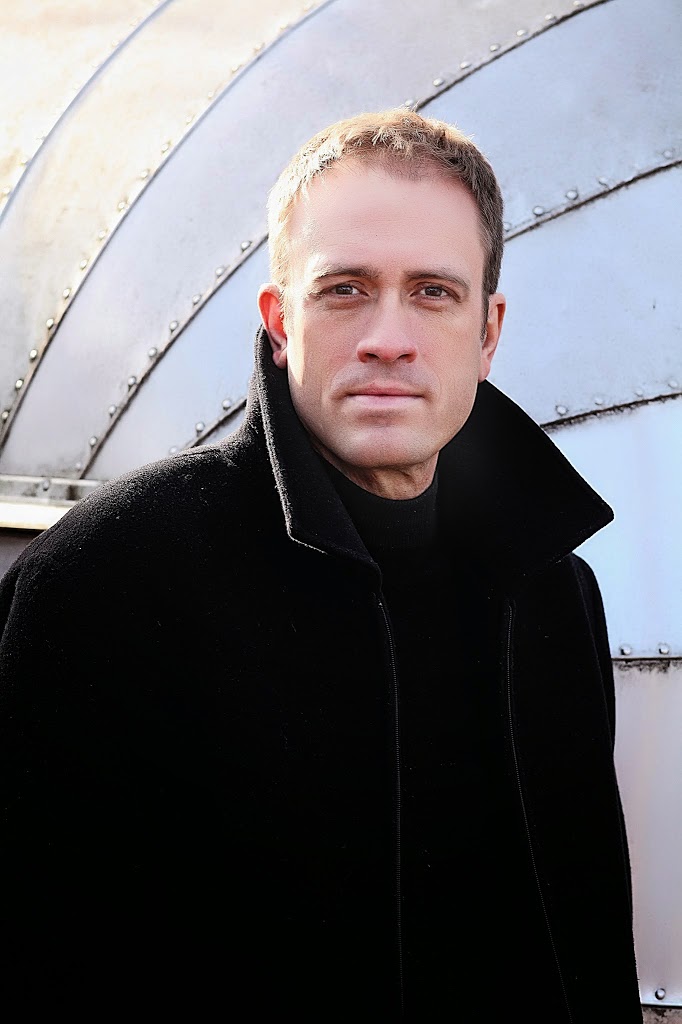 by Steven James
by Steven James
Note from Jodie: I’m busy trying to sell my house and getting ready to move across the country, so I invited Steven James, one of the nicest and most talented writers and presenters I know, to fill in for me, and he graciously accepted. He has some excellent advice for fiction writers for pumping up your creativity and coming up with new ideas for your stories. Take it away, Steven!
* * *
Thanks, Jodie. Great to visit The Kill Zone.
Most of us know what it feels like to be uncreative—our ideas are stale and dry, our writing is boring and predictable. We long to inject our stories with ideas that are fresh, original, inventive, and spontaneous.
But how do you do it?
Here are four ways:
1. Explore Your L.I.F.E.
When you don’t know where else to turn, explore L.I.F.E., an acronym for Literature, Imagination, Folklore, and Experience. L.I.F.E. is a limitless well of ideas waiting to be tapped into.
Coax new stories from classic plots by setting them in a different time and place; examine your imagination for themes that pique your interest; search through the timeless motifs of myth, fairy tale and folklore; scour the expanses of your own experience to spark new ideas. Let your memories come alive!
Some memories inspire us, others haunt us. Some memories cling to things we own, others hover around places we’ve been. Start with what you have, nurture that fragment of a memory: your teacher’s face, the smell of your grandmother’s cookies, the charming way your father used to whistle, the chill in your soul as you rushed to the hospital, the taste of salt spray that summer at the ocean, how it felt to hold your daughter’s hand for the first time. Turn those memories over in your mind, flesh them out, allow them to breathe.
Every vivid memory is a garden of ripe plot ideas waiting to be harvested.
2. Change Your Perspective
A few years ago while visiting a hotel in Denver, I noticed “EXIT” signs not only above the exit doors, but also at their base. “How odd!” I thought. “Only someone crawling on the floor would need a sign down there!”
Aha.
Whoever placed those signs down low had looked at the doors through the eyes of someone crawling for safety during a fire.
Creativity isn’t “seeing what no one else sees,” it’s “seeing what anyone else would see–if only they were looking.” New ideas are born when we view life from a fresh perspective or peer at the world through another set of eyes.
Keep ideas alive by working backwards and sideways, by peering over your shoulder rather than always staring straight ahead. Remember, you don’t dance in a straight line.
So take a moment and look at your story from another person’s perspective. Step into the shoes of your main character and write a journal entry, a complaint letter, or a love note. Switch your point of view. Write a few paragraphs in first person or third person. Think of how you would respond if you were in the story. Walk through the action, stand on your desk, crawl on the floor. And keep your eyes open for the doors no one else has noticed.
3. Let Serendipity Happen
In Horace Walpole’s 18th century Persian fairy tale The Three Princes of Serendip, the heroes discover new things again and again while looking for something else. From this we get the word “serendipity,” which Walpole defined as “the facility of making happy chance discoveries.”
Fiction pivots upon the hinge of serendipitous discoveries—the detective recalls the victim’s clogged drain while combing her hair, the lawyer realizes the significance of the cell phone when he knocks his off his desk, the spy remembers the secret gadget hidden in his wristwatch. At the time, they weren’t searching for a solution, but they found one. After they’ve tried everything they can think of, the answer comes riding in on the wings of serendipity.
If you’re stuck and drained of ideas, you might be trying too hard. You can’t make happy chance discoveries until you step away, take a break, experience life, and stop worrying about your writing. Relax. Worrying about problems is like looking at bacteria through a microscope—it doesn’t help ‘em go away, it only makes ‘em look bigger. And the longer you stare, the more imposing they appear.
So work smarter, not harder. Break your routine. Go to a movie. Have a cup of coffee. Abstain from octopus. Try writing in a different place or at a different time. Lift weights. Vary your schedule. Get up in the middle of the night. Place yourself in situations where you’re not at ease—risking and responding to new challenges forces you to think creatively and opens the door for serendipity. Do something completely different and let those parts of your brain you’re not even aware of chew on the problem for a while.
Let serendipity work for you.
4. Set Specific Boundaries
A photographer focuses on a single event and snaps the picture, freezing that moment forever. Her picture reveals only a sliver of reality, yet that carefully framed sliver contains a world of meaning. A great photographer knows just what to leave out.
Fiction writers don’t have a viewfinder. The lens we look through is as large as our imagination. And when we can’t think of what to write next, we often try generating more ideas when we really need to set more limits. The skilled photographer is careful to frame her shot just right. The skilled writer is careful to fence in his idea.
Nothing stalls writing more effectively than lack of focus. Freedom to write anything usually ends up becoming an excuse for not writing anything. As William Zinsser notes in On Writing Well, “Every writing project must be reduced before you start to write it.”
So sharpen your focus, clarify your framework, and set some boundaries. What’s your story really about? What’s the theme? The deadline? The word count? If you weren’t assigned any boundaries, set them yourself.
5. Question Your Direction
A Jewish folktale tells of a man searching for paradise. Every night he points his shoes toward his goal and goes to bed. Every morning he steps into his shoes and continues his journey. But one night, a mischievous imp turns the shoes around. The next day the man thinks he’s headed for paradise, but he’s really walking back home. Pretty soon, he ends up back where he started from.
His problem had nothing to do with lack of effort or motivation. He even had a wonderful destination. He just never noticed he was walking in the wrong direction.
That same imp visits writers. He sneaks into our stories and points the plot in the wrong direction. And we keep plugging away, writing page after page of a story that’s headed nowhere.
Sometimes, we write ourselves into a corner. We try harder and harder to scale the walls we’ve erected without ever wondering, “Does this story even need that corner?”
So, always question where you’re going. Don’t assume that you must be going in the right direction just because you’re picking up from where you left off yesterday. Ask yourself, “Is this really the right direction for this story? If not, where did I make the wrong turn?”
Stay on track. Every day when you start writing, make sure the shoes are pointing in the right direction.
Writers – what are some tricks you use to jump-start your creativity?
Steven James is a critically acclaimed, bestselling author of ten novels including Opening Moves, The King, and Singularity. He has taught writing and storytelling on three continents and is a contributing editor to Writer’s Digest. Visit him at http://www.stevenjames.net.
A Book That Failed And What We Can Learn From It
Selling Your Books Worldwide
Although globalization has hurt a lot of businesses in this country, it’s helping American writers. Adam Smith’s invisible hand has reached across the oceans, opening up new markets for thrillers and mysteries made in the good ol’
Reader Friday: Best Tools for Writers?
Tool Guy wants to know: what writing software or tools do you use?
p.s. Click here for a discussion about some specific tools.
Five Key Ingredients to Nurture a Story
I’ve read and heard various posts/discussions on where story ideas come, but for me it starts with one foundational notion—maintaining a fertile active mind. An author’s mind should be a rich soil cultivated for the seed of a story. Many elements can inspire and pique the interest of the author, but it takes a keen sense of storytelling for the seed to germinate into a story the writer wishes to tell. The author must be willing to commit to the project because it will take blood, sweat, and tears to complete the harvest and finish the book.
Five Key Ingredients to Nurture a Story
1.) Cultivate Fertile Ground
An author’s mind must be open to many things, much like a scientist is inquisitive about the world. I’ve found that passing judgment is a barrier to creativity. (What do you think?) Often research nurtures leaps that bound from one topic to the next until something resonates with the writer and the germination of a book idea begins. The “what if” question is a great place to start. Even if an idea or research topic doesn’t seem likely for one story, that research or notion may work for another book. Stay open to possibility. Sometimes it takes several ideas to make a story. Only the author writing the book will know when the combination is “write.”
2.) Stay Thirsty, my Friends
Yes, I’m borrowing the words of “the most interesting man in the world” because the notion fits. An author’s mind must be fluid and should be a sponge for ideas and inspiration. A writer’s constant thirst allows a story to take root and grow. The thirst sustains the writer over a career, but it also enhances his or her quality of life by filling the mind with a passion for learning new things. Flexing the mental muscle keeps the author young, don’t you think? Maybe learning new things allows an author’s brain to fend off age like the movie, “The Curious Case of Benjamin Button.”
3.) Heap on the Fertilizer
Yes, I’m going there. Compost and B.S. It takes a willingness to heap on the bull to push the envelope on what’s being published. Writers can look for trends to write and jump on an already established “band wagon,” but I believe every author has the duty to shove on the edge of the creative envelope. Make projects fun. A writer should be willing to write slightly out of their comfort zone to test their skill. It’s a challenge that can stir greater passion and a sense of accomplishment when the work is done. The story should drive the creativity, even if it takes the book and the author to a new place. If an author writes the type of book they want to read, with a good grasp of author craft, I believe they are the marketplace. Others will want to read the book too.
4.) Know When to Harvest
At some point an author will have to finish those interminable revisions and get on with it. Hiding out in revision hell too long stifles creativity. That never-ending book will become more of an albatross. Get your proposals out and do it in stages while you start something new to keep your mind distracted while waiting. Keep writing and finish what you start. Don’t walk away from writing a book because you lost interest or faith in the project. You will learn more from working out the problem than abandoning a book because that problem could turn out to be a chronic and recurring issue in need of a fix.
5.) Have Patience in Taking Your Crop to Market
Don’t rush the process. Hone your craft and put the time in to make your manuscript flourish. I see too many people rush to self-publishing. bypassing publishers and agents. (I’m in support of self-publishing, so please don’t read into my intent.) Some authors avoid the marketplace (selling a book to a publisher or seeking an agent) because they either don’t know how to do it or they wish to avoid getting that pesky pile of rejection letters. No one likes rejection, but it does build character and cultivates thick rhino skin, which comes in handy even after you’re published. Understanding the marketplace builds on your knowledge of the industry. Sometimes testing your worth in the market will give you much needed feedback. Avoid flying a charter helicopter over NYC and dropping query letters in a blanket snow fall. Be more selective and test a query letter. If it doesn’t provide a nibble or two, try something else and tweak your proposal until you get that “better” form of rejection or a sale.
What say you, TKZers?
1.) What triggers a story in you?
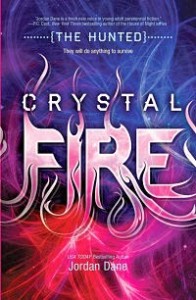 The latest release from Jordan Dane – Crystal Fire (Harlequin Teen, Dec 2013) The Hunted series.
The latest release from Jordan Dane – Crystal Fire (Harlequin Teen, Dec 2013) The Hunted series.

